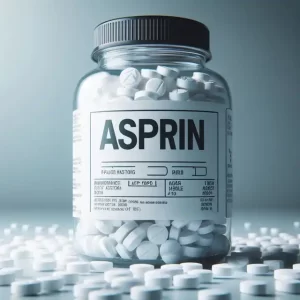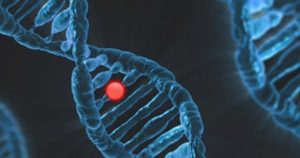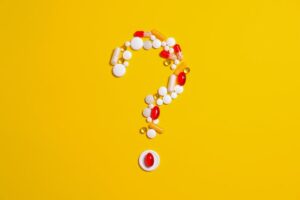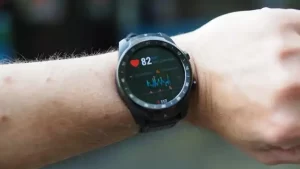Science Advances: Amazing Regeneration of Severed limbs!
- Aspirin: Study Finds Greater Benefits for These Colorectal Cancer Patients
- Cancer Can Occur Without Genetic Mutations?
- Statins Lower Blood Lipids: How Long is a Course?
- Warning: Smartwatch Blood Sugar Measurement Deemed Dangerous
- Mifepristone: A Safe and Effective Abortion Option Amidst Controversy
- Asbestos Detected in Buildings Damaged in Ukraine: Analyzed by Japanese Company
Science Advances: Amazing Regeneration of Severed limbs!
- Red Yeast Rice Scare Grips Japan: Over 114 Hospitalized and 5 Deaths
- Long COVID Brain Fog: Blood-Brain Barrier Damage and Persistent Inflammation
- FDA has mandated a top-level black box warning for all marketed CAR-T therapies
- Can people with high blood pressure eat peanuts?
- What is the difference between dopamine and dobutamine?
- How long can the patient live after heart stent surgery?
Science Advances: Amazing Regeneration of Severed limbs!
According to the latest research data, the incidence of human limb loss is expected to increase significantly over the next 30 years, affecting approximately 3.6 million people each year, such as diabetics, veterans, trauma survivors and patients with peripheral arterial disease.
Despite great strides in developmental and regenerative medicine, the goal of successfully regenerating entire complex organs remains elusive . Currently, clinicians still lack effective means to promote tissue recovery or reverse tissue loss.
Many creatures, including salamanders, starfish, crabs, and lizards, have at least parts of their limbs that can fully regenerate, and flatworms can even be chopped into pieces, each of which can be rebuilt into a whole organism.
Human livers have an astonishing, almost flatworm-like regenerative capacity to nearly return to their original size after a 50 percent loss, but the possibility of restoring animal limb function through natural regeneration remains out of reach .
On January 26, 2022, scientists from Tufts University and other units published a research paper entitled: Acute multidrug delivery via a wearable bioreactor facilitates long-term limb regeneration and functional recovery in adult Xenopus laevis in the journal Science Advances .
Their study found that non-regenerating adult Xenopus can be induced into a persistent regenerative state by a transient bioreactor, allowing its potential regenerative capacity to be restored to regenerate and remodel lost limbs .
The regenerated tissue is composed of skin, bone, vasculature and nerves, and its complexity and sensorimotor capabilities far exceed those of untreated animals.
Furthermore, this inducible approach does not require gene therapy or stem cell implantation, while producing molecular, cellular, and tissue-level changes that restore limb morphology and sensorimotor function, bringing us one step closer to the goals of regenerative medicine.

Five-drug combination regimen induces bone regeneration after amputation
First, the researchers amputated the hindlimbs of adult Xenopus laevis and installed a silk hydrogel device called BioDome, which contains either a single silk hydrogel (BD) or five pro-regenerative compounds (BDNF, 1 , 4-DPCA, RD5, GH and RA) hydrogel , the latter collectively referred to as MDT (Multidrug Treatment, multi-drug treatment).
Control animals were amputated and returned to the growth chamber without treatment (Not treatment, ND).
After 24 hours, the device was removed, and the animals continued without further intervention for up to 18 months, with the researchers periodically assessing hindlimb regeneration.
Over the 18-month regeneration cycle, the length of regenerated soft tissue increased in all groups, but the multidrug-treated animals showed larger and more complex soft tissue growth compared to the other groups .
This significant increase in soft tissue growth was observed as early as 2 weeks after amputation, and this advantage persisted until the end.
These data suggest that topical application of MDT at the site of amputation induces a larger and more durable regenerative response .

Multidrug therapy increases bone growth and bone remodeling after amputation
To characterize the internal structure of regeneration, they analyzed bone growth and its patterns .
Three-dimensional CT scan results showed that the amputation plane bone growth was significantly increased in the multidrug treatment group compared with the no treatment group.
They further analyzed anatomical features such as bone volume and trabecular bone density to determine the complexity of new bone.
MDT-treated animals showed greater bone volume and trabecular density compared to the other groups .
At the same time, compared with the other groups, bone length in the MDT group began to increase as early as 4 months after amputation, with a pronounced growth curve appearing around 8 months.
Collectively, these observations suggest that MDT treatment induced significant bone regeneration and remodeling after only 24 hours of wound placement .

Transcriptome profiling reveals regulation of developmental pathways
To gain insight into the mechanism of action of MDT treatment, they sampled early tissue from MDT animals versus ND animals at different time points and performed transcriptome analysis.
The analysis showed that the gene expression profile had changed significantly in the 11-hour tissue compared to the tissue at 7 days after amputation .
Using significantly different genes in MDT and ND, they enriched for significantly up- and down-regulated signaling pathways.

Further gene set enrichment analysis revealed that the top 15 highly upregulated signaling pathways in tissues were associated with neuromodulation, inflammatory signaling and cell morphogenesis .
Further investigation of the genomes involved in neural-specific activation revealed that brain-specific kinases, neuropeptide expression, dopamine receptors, and neuroglobulin peaked at 11 hours after amputation and then declined at 24 hours and 7 days later.
Interestingly, they also observed that Wnt7a, a gene involved in the development of the anterior-posterior axis of the embryo, was up-regulated after 11 hours and further at 7 days; key pro-regenerative inflammatory genes such as TGFB, PTGS2, IL1B and FOXP2 were upregulated at 11 and 7 days, respectively. High expression at 24 hours, but disappeared after 7 days.

Peripheral nerve regeneration and recovery of motor function
The ultimate goal of regenerative medicine is to promote functional recovery, not just anatomical recovery.
The researchers therefore investigated functional regeneration by assessing the animals’ motor responses 18 months after treatment.
To determine the presence of neural tissue, they performed immunohistochemistry to assess peripheral nerve regeneration.
Compared with the ND or BD groups, the number of nerve bundles was significantly increased in the MDT group, indicating that MDT treatment promoted the regeneration and innervation of nerve fascicles .
Furthermore, not only did the animals in the MDT group have more nerve fascicles, but the diameter of the nerve fascicles in these animals was much larger than in the ND group .
To assess whether the animals’ function had recovered after 18 months, they performed sensorimotor assessments.
They observed that the hindlimbs of all MDT-treated animals displayed a stimulus-response pattern similar to that of normal animals .
This showed that their nerves and neuromuscular function had been significantly restored compared to their normal pre-injury function ; whereas the untreated control animals showed no response, indicating severe loss of function.
This suggests that the bioreactor device provided effective support to peripheral nerves and promoted neural regeneration of the tissue over time, and the device combined with MDT to further promote regeneration .

Sum up:
Taken together, the researchers triggered the regeneration process in Xenopus laevis by wrapping the amputated wound in the BioDome, a bioreactor .
BioDome contains a silk protein gel containing a combination of five drugs, each of which works differently, including inhibiting inflammation, inhibiting the production of collagen that causes scarring, and promoting new growth of nerve fibers, blood vessels and muscle.
This combination and bioreactor provide a positive signal that tilts the damaged tissue towards the regenerative plane.
The regenerated tissue and bone features similarities to the skeletal structure of a natural limb, contains abundant internal tissue (including neurons), and can respond to stimuli .
Thus, the study represents an important milestone in restoring intact limb function and suggests that further exploration of combinations of drugs and growth factors may lead to a more complete regenerated limb function.
Dr. Nirosha J. Murugan , first author of the study , said: “It was very exciting to see that our drug of choice helped create a nearly complete limb. In fact, only a brief exposure to the drug was required to initiate the A months-long regeneration process suggests that frogs and other animals may have a potential for regeneration that can be stimulated.”
Corresponding author Professor Michael Levin said: “Next, we will test whether the same treatment applies to mammals, where an open wound covered with BioDome can provide the first signal necessary to initiate the regeneration process.”
References :
1. Murugan et al., Acute multidrug delivery via a wearable bioreactor facilitates long-term limb regeneration and functional recovery in adult Xenopus laevisSci. Adv. 8, eabj2164 (2022).
2. A. Joven, A. Elewa, A. Simon, Model systems for regeneration: Salamanders. Development 146, dev167700 (2019).
3. GL Johnson, EJ Masias, JA Lehoczky, Cellular heterogeneity and lineage restriction during mouse digit tip regeneration at single-cell resolution. Dev. Cell 52, 525–540 e525 (2020).
Science Advances: Amazing Regeneration of Severed limbs!
(source:internet, reference only)
Disclaimer of medicaltrend.org
Important Note: The information provided is for informational purposes only and should not be considered as medical advice.



